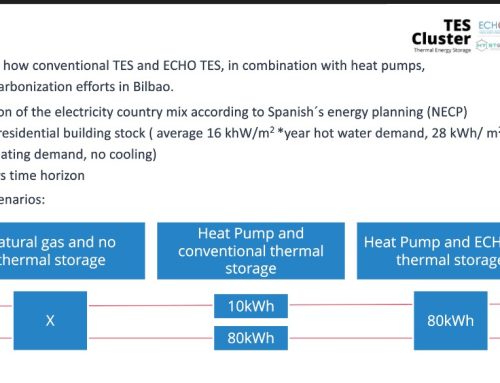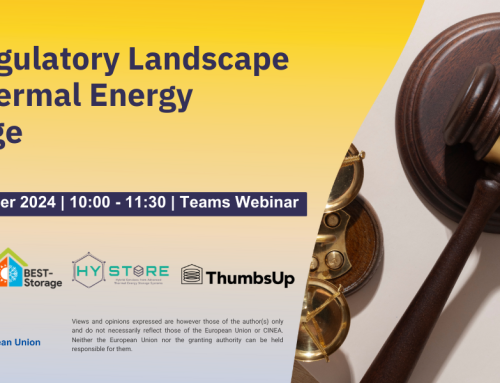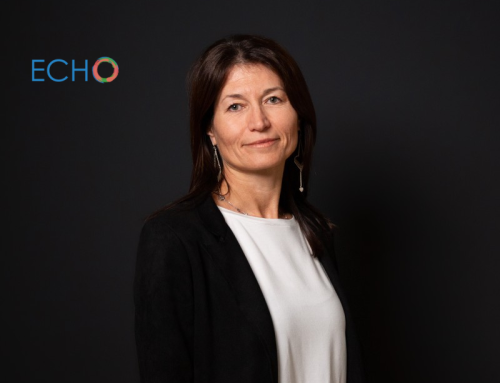6 November 2024
In anticipation of the upcoming TES Cluster webinar, titled “EU Regulatory Landscape for Thermal Energy Storage” and scheduled for November 21 from 10:00 to 11:30 CET, we had the privilege of interviewing Dr. Karla Zambrano González.

Dr. Karla Zambrano González holds a PhD in Law from the University of Valencia, where her doctoral thesis on climate change law received the highest distinction of CUM LAUDE with international mention. She is currently an external legal researcher at the Universitat Politècnica de València’s ITACA Institute, focusing on intersections of law, technology, and environmental challenges.
In addition to her research roles, Dr. Zambrano has taught law at Universidad Internacional de la Rioja, covering topics related to human rights and international environmental law. She is actively engaged with prominent institutions, including the University of Cambridge and the Sorbonne, and has been recognized with awards such as the “Tomás y Valiente” prize for outstanding legal research. Notably, she also served as an EU Climate Pact Ambassador, and her career includes extensive work in immigration law and the defense of human rights.
1) What is the current regulatory scenario for the Thermal Energy Storage sector in the European Union?
The European Union has been actively working to establish a robust regulatory framework aimed at achieving climate neutrality, starting with the European Green Deal in 2019. This Deal is a broad strategy to guide the EU toward zero emissions, with a focus on multiple sectors, including energy. The structure of this regulatory framework is multi-level: it begins with international agreements like the Paris Agreement and moves down through EU-wide regulations and directives that address specific sectors. The Green Deal has brought to light the need to address renewable energy sources and storage, including TES. Although there is a recommendation from the European Commission in 2023 highlighting the importance of energy storage, there is currently no specific regulation governing TES as a distinct technology within energy storage. Instead, TES is broadly categorized under general renewable energy strategies, which can limit its potential for specialized growth.
2) What are the main regulatory challenges that stakeholders in the sector are facing in the current context?
The most pressing regulatory challenge for TES stakeholders is achieving harmonization across EU Member States. Due to shared competencies between the EU and individual states, directives often require national transposition, resulting in varying applications across countries. This lack of harmonization complicates the creation of a uniform regulatory environment essential for achieving climate neutrality. The challenge is intensified by differing legal systems and legislative priorities among EU members, alongside frequent changes in government that can shift climate and energy policies. Additionally, regulatory fragmentation persists between EU and non-EU project partners, such as the UK, Turkey, and Serbia, whose legal frameworks are not bound by EU law. Addressing these disparities is critical to ensuring that the entire region can move toward the climate goals established by the Green Deal and related EU commitments.
3) What legislative changes would be needed to further promote the adoption of thermal storage technologies in the EU?
To specifically advance TES adoption, a targeted regulatory approach is necessary, distinguishing TES from other energy storage solutions like batteries. Currently, TES is broadly grouped with battery storage, despite differing technical requirements and applications. A dedicated directive or regulation on TES would help clarify its role within the EU’s energy strategy. Furthermore, aligning TES regulations with broader energy flexibility measures could foster an environment where TES can contribute to balancing supply and demand, supporting renewable integration, and enhancing grid resilience. A specific directive, similar to the existing battery directive, could streamline TES implementation and encourage Member States to develop localized support mechanisms for TES projects, addressing regional needs while maintaining alignment with overarching EU climate goals.
4) How do you see the level of progress varying across different EU countries in terms of adopting regulations and supporting thermal energy storage technologies?
Progress in adopting and supporting TES technologies varies across EU member states, often reflecting each country’s specific regulatory environment and energy needs. Countries hosting EU institutions, such as Belgium, demonstrate a heightened awareness of EU climate and energy policies, which supports more proactive engagement with TES. Spain, too, has made notable progress, partly due to influential policymakers like Teresa Ribera in the European Commission. However, TES deployment faces more challenges in member states with established energy dependencies, such as France, which relies heavily on nuclear power. Overall, while progress is generally aligned with EU goals, certain states are better positioned to lead due to their policy environments and alignment with EU institutions.






